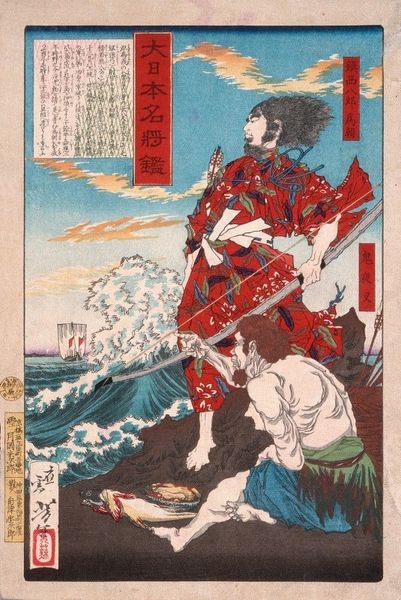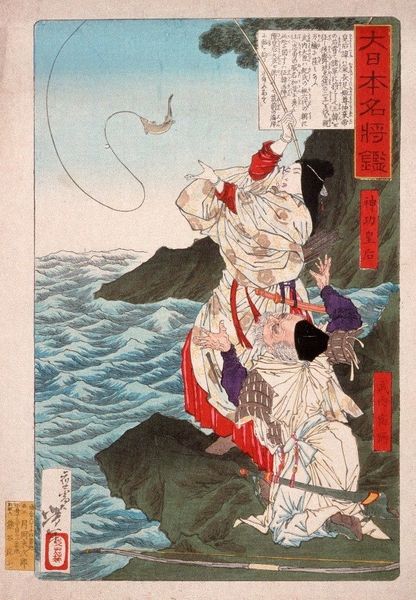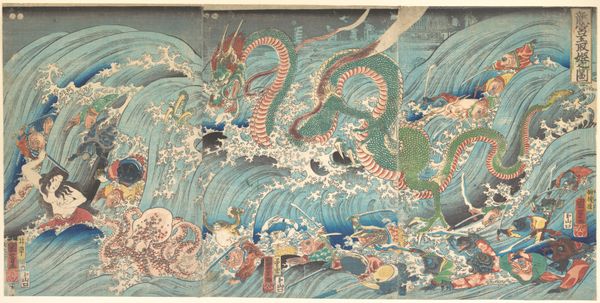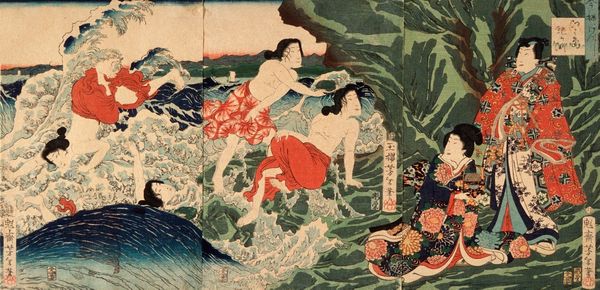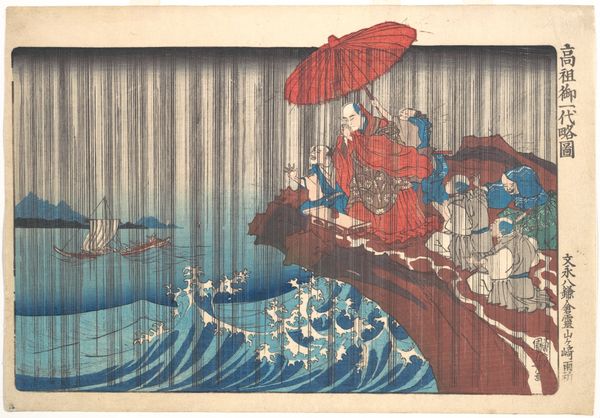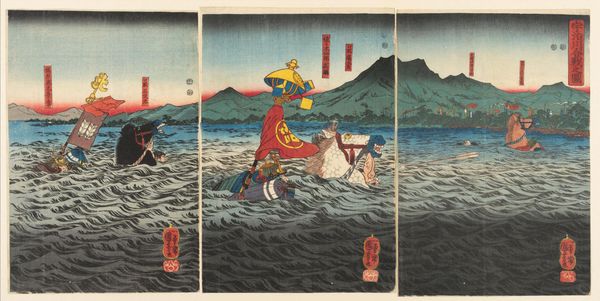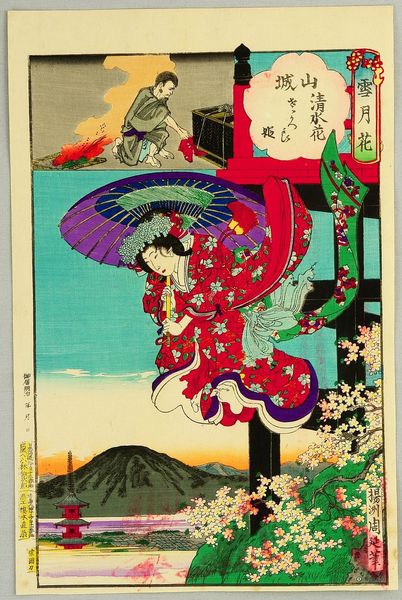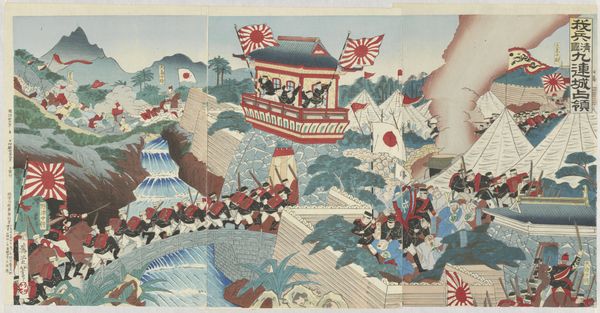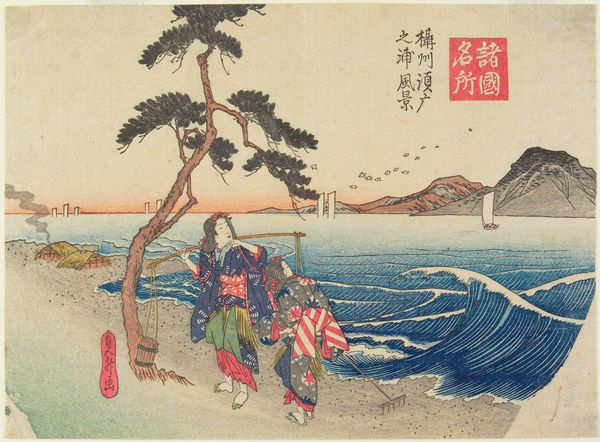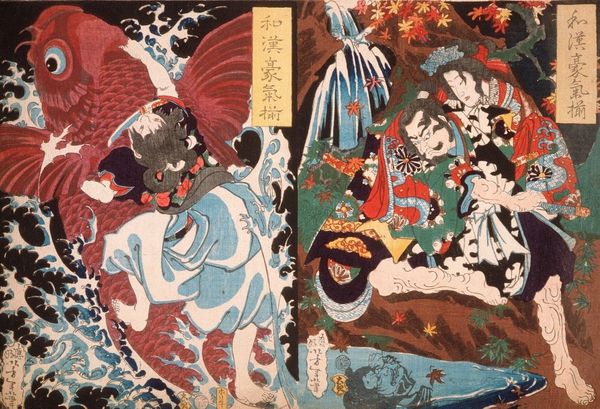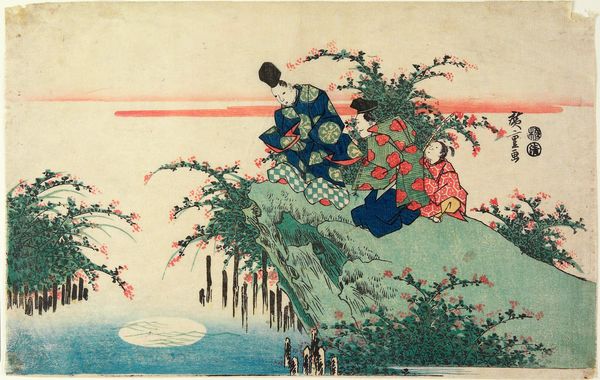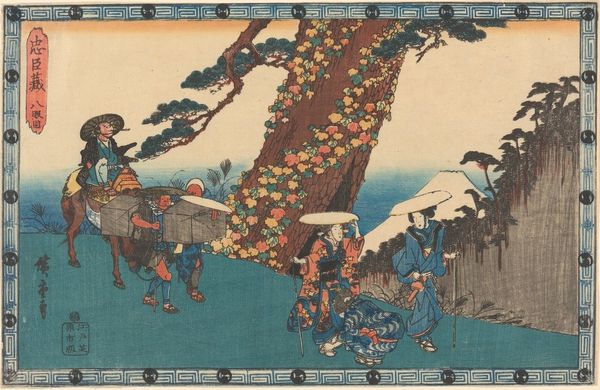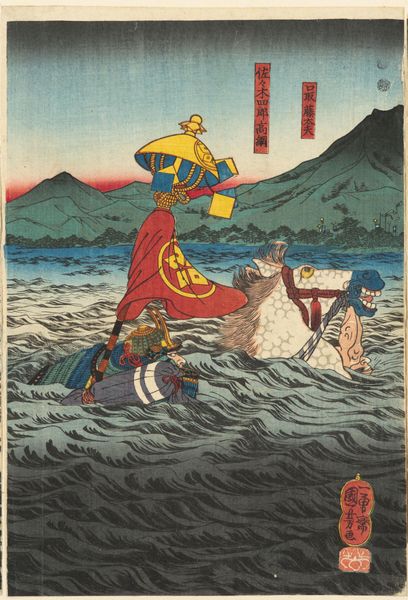
Copyright: Public Domain: Artvee
Curator: What a scene! "The Demon Omatsu Kills Shirōsaburō in the Ford," created around 1886 by Tsukioka Yoshitoshi—it’s a woodblock print pulsing with energy. Look at how the water swirls, almost vibrating. Editor: It strikes me as theatrical—a tableau frozen mid-narrative. The figures, especially the woman, seem almost too composed, like actors on a stage, which is ironic given how chaotic the river appears to be. What sort of tale is unfurling? Curator: A gruesome one, though gorgeously rendered. The print depicts a dramatic moment where Omatsu, possessed by a demon, is in the process of slaying Shirōsaburō as he attempts to carry her across the river. The look of agony is etched right onto the poor guy’s face. Editor: I notice the sharp contrast between the victim’s visible distress, mirrored in his taut facial muscles and straining neck, and the woman’s expressionless countenance. Her face feels less like a moment of possession and more like a carefully crafted mask. Does Yoshitoshi aim for purely illustrative effect or try to depict demonic power? Curator: I feel it's both. I see the demon not as literally real, but as an exploration of internal psychological turmoil represented by external forms, right? He blends Ukiyo-e traditions with his own raw vision of the horrors within the human heart. His color choices are quite stunning and not true to reality. He may be highlighting the unreality of a mental space being manifested onto an otherwise ordinary ford. Editor: He certainly masterfully uses color as both structure and visual shorthand here. Take the bold blues in the water: they aren't merely representational but structurally crucial, defining depth and directing our gaze to the turbulent focal point, even though it does create this contrast that doesn't reflect the light. Is the demon metaphor speaking to how social ills become ingrained realities? Curator: Absolutely, or even how one's repressed emotion becomes violence—metaphor turned visceral! And look closer: the detail in the kimono juxtaposed with the rough strokes of the water; there's beauty interwoven even within these brutal scenes. A harsh but stunning commentary on what torments people when we’re alone or caught by surprise. Editor: Right. It feels both hyperreal and utterly staged, forcing us to confront a brutal act of possession, yet simultaneously questioning its own reality. Thank you for your insights. Curator: And thank you; these old prints always offer something new to ponder.
Comments
No comments
Be the first to comment and join the conversation on the ultimate creative platform.
